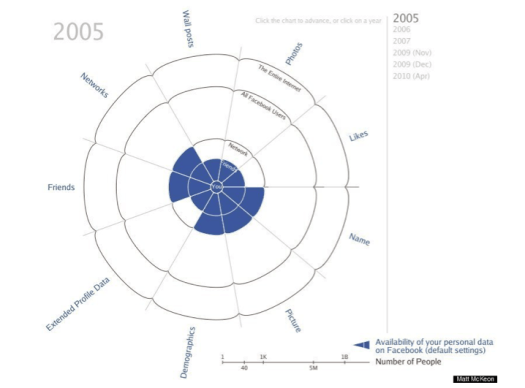Last Thursday I ran a session with our Yr 8 cohort to cover some aspects of what is required to be a mindful digital citizen and take responsibility for managing your digital footprint. We started with a video I featured on School’s out Friday a week or so ago.
It’s an attention grabber, that’s for sure. I like to use video to start a session; it pulls their attention in and helps get the students focused. A hand was raised immediately following with a student asking was all of this information obtainable through Facebook. I’ve found that students tend to think about what they are sharing in spaces like Facebook, but they aren’t so conscious of the dangers of sharing details across sites that are not http secure. I asked how many of them know what https means and if they are conscious of this when they are purchasing items online. Three hands were raised, and two of those belonged to teachers in the room!! If you’re not sure what it is, here’s part of the description from the Wikipedia page about it.
In its popular deployment on the internet, HTTPS provides authentication of the web site and associated web server that one is communicating with, which protects against Man-in-the-middle attacks. Additionally, it provides bidirectional encryption of communications between a client and server, which protects against eavesdropping and tampering with and/or forging the contents of the communication.[1] In practice, this provides a reasonable guarantee that one is communicating with precisely the web site that one intended to communicate with (as opposed to an impostor), as well as ensuring that the contents of communications between the user and site cannot be read or forged by any third party.
This was news to the vast majority of students in the room and had many of them very concerned about their use of sites where they purchase clothes and shoes. I shared with them the story of my daughter requesting a pair of shoes from a site, and me saying ‘no way’ because it was a http site and not https. Many of them were on their way home that evening ready to check the sites they’ve been using. Once again, the experience had me wondering just what proportion of our populations have any idea about things like this, and if they don’t, who is going to be helping them to understand it. We need to be covering information like this, just as much as we do informing our students about the dangers of oversharing pictures and personal information.
I had the students working in groups using old fashioned poster paper and textas to write their definition of, ‘What is a digital footprint’ and tips they would give to others to manage it effectively. They shared what they’d written in a discussion and I was pleasantly pleased to hear them articulate some of the messages we have been reinforcing with our use of student blogs throughout the school. We used the following CommonSenseMedia video to help cement what they’d been sharing. It was perfect for a Year 8 audience.
Following this, we looked at the following video from Thinkuknow UK. It’s a bit more heavy handed in its message, but these are important lessons for kids who are heading towards fifteen. I heard many students saying ‘this is creepy’ but they were taking this message in and I’m sure it had them thinking.
At the end of the session I reinforced with them they we were not discouraging their use of social media. It’s a reality of the world we live in and if our students use it mindfully it can be a very positive element in their lives. To finish the session, I took them through Google Alerts and encouraged them to set one up for their name so that they could try to monitor new content that was appearing in the Google Search engine under their name. Of course, it’s not so effective for students with relatively common names, but it’s a handy thing to know about and they can use it to track research topics for projects they are doing as well.
Sessions like this are important for the kids we teach. Thank goodness we have some really fabulous organisations around the world making useful videos to help us deliver the message.





![Reblog this post [with Zemanta]](https://i0.wp.com/img.zemanta.com/reblog_e.png)